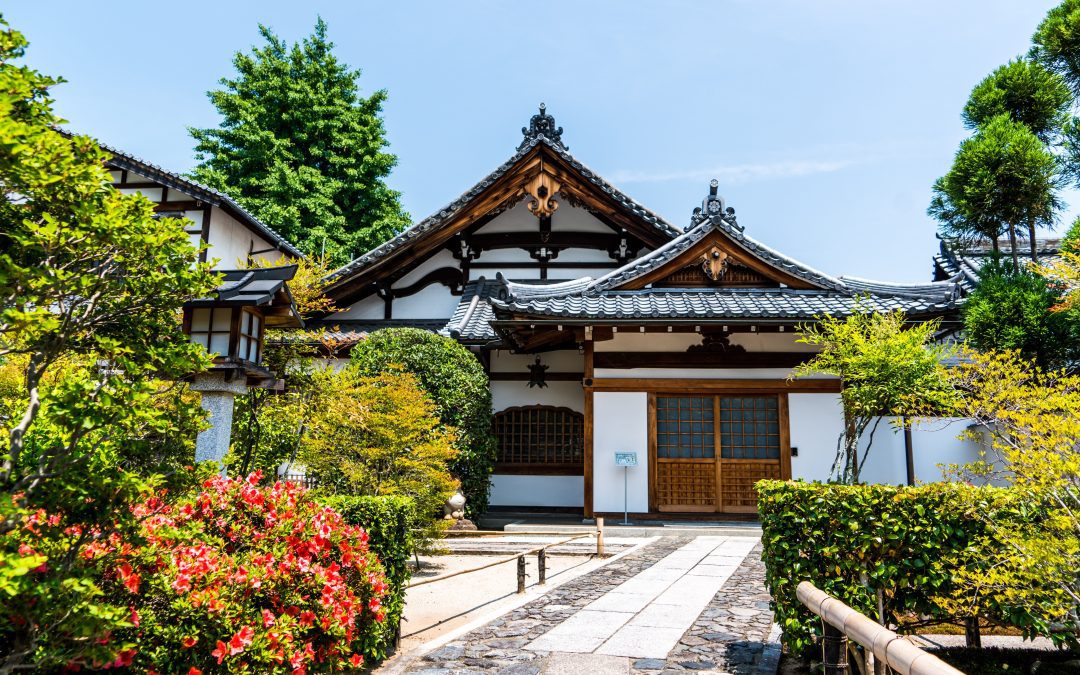The interplay between hardscape and softscape elements is the secret ingredient to creating a visually stunning and balanced landscape. Softscape refers to the living, horticultural elements of landscaping, encompassing plants, flowers, trees, and soil. On the other hand, hardscape comprises non-living, structural features like pathways, patios, walls, and other man-made elements.
Keep reading to unravel the art and science of integrating softscape with hardscape, uncovering the key principles that bring harmony to your outdoor oasis.
Balancing Act
Achieving a harmonious balance between softscape and hardscape is the essence of successful landscaping. Too much hardscape, like lots of concrete or stone, can make things feel cold and unwelcoming. On the flip side, if there’s too much softscape with plants everywhere, it can look messy and be hard to move around.
Imagine it like a well-organized painting. The hardscape is the solid part, like the frame of the painting, giving structure. Softscape is the living part, such as plants and trees, adding color and life. To get this balance, you must consider what works best for your space, what you like, and what kind of atmosphere you want. It’s like choosing the right ingredients for a recipe. Mix them well, and you’ll have a simple yet beautiful outdoor area where everything fits together just right.
Creating Focal Points
Integrate hardscape elements strategically to draw attention to specific areas. A well-designed patio or a gracefully winding pathway can serve as a focal point, guiding the eye and creating visual interest. Complement these features with carefully chosen softscape elements, such as vibrant flower beds or ornamental trees, to enhance the overall aesthetic.
Texture and Color Play
Softscapes and hardscapes offer a rich palette of textures and colors. Explore the interplay between the smooth surfaces of a stone pathway and the lush foliage of surrounding plants. Consider the contrast between the sturdy structure of a retaining wall and the delicate blossoms of flowering shrubs. The juxtaposition of textures and colors adds depth and dimension to your landscape.
Functional Unity
Integrating horticulture with hardscape goes beyond aesthetics; it’s also about functionality. Consider the practical aspects of your outdoor space. For instance, if you have a paved patio, soften the edges with well-placed planters or bordering flower beds. This enhances visual appeal and seamlessly transitions between the built environment and the natural world.
Sensory Experience
Incorporate softscape elements that engage the senses. Consider aromatic plants, like lavender or rosemary, to add a fragrant touch or ornamental grasses that sway in the breeze, creating a sensory-rich environment.
Soundscapes with Hardscape
Explore the auditory dimension of your landscape by incorporating hardscape elements that generate soothing sounds, such as a bubbling fountain or a trickling stream. Combine these features with horticultural choices that enhance the overall acoustic ambiance.
Practical Tips for Integration
Here are a few tips that can help you achieve the perfect combination of hardscape and softscape:
Selecting Complementary Plants
Choose plant varieties that thrive in the specific conditions of your hardscape elements. Consider factors like sunlight exposure, soil type, and water requirements to ensure the health and vitality of your plants.
Mindful Placement
Pay attention to the placement of softscape elements concerning hardscape features. Tall trees, for instance, can provide shade to a paved patio, creating a comfortable and inviting space for relaxation.
Seasonal Dynamics
Embrace the ever-changing nature of softscape by incorporating plants that bloom at different times of the year. This ensures that your outdoor space remains vibrant and appealing throughout the seasons.
Water Features and Greenery
Explore the integration of water features, like fountains or ponds, with plants to add a touch of tranquility. Surround these features with lush greenery to create a serene and inviting atmosphere.
Edible Landscaping
Consider incorporating edible plants into your softscape design, such as herbs, fruits, or vegetables. This adds a practical aspect to your landscape and introduces a delightful blend of functionality and aesthetics.
Artistic Hardscape Elements
Try incorporating artistic hardscape elements, such as sculptures, decorative stones, or custom-designed pathways, to elevate the visual appeal of the landscape and add a touch of personal expression.
Wildlife-friendly Softscape
You can also include flora that attracts and supports local wildlife, like native plants and pollinator-friendly flowers, contributing to a thriving ecosystem in your outdoor space.
Final Thoughts
The intentional blending of living and non-living elements creates a symphony of beauty that resonates throughout your outdoor sanctuary. So, let the touch of nature commence in your own backyard, where softscape and hardscape gracefully intertwine to create a harmonious masterpiece.
Transform your outdoor haven with Sarasota Landscaping Inc., where expertise meets artistry. Elevate your surroundings, harmonize hardscape and softscape elements, and embrace the beauty of a tailored landscape. Are you ready to bring your vision to life? Contact us today for a consultation that turns dreams into reality. Your landscape, our passion—we craft natural masterpieces for your every inspiration.

